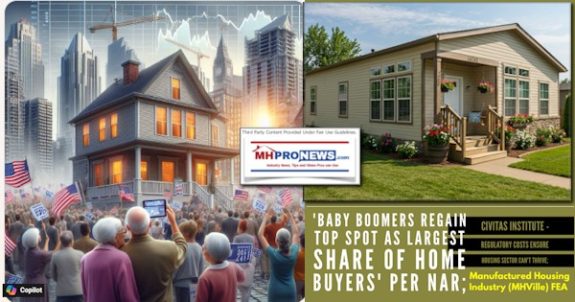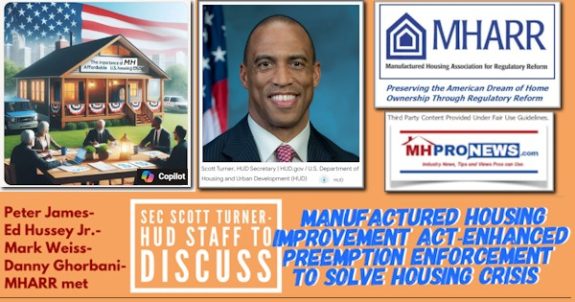Top National News
Builder Confidence Remains at Almost 8-Year High
Confidence among home builders in September remained at the highest level in almost eight years, despite rising mortgage rates, according to a report releasedTuesday. The National Association of Home Builders/Wells Fargo housing-market index stood at 58 in September, while August’s confidence level was revised to 58 from a prior estimate of 59. Economists polled by MarketWatch had expected a reading of 59 for September. The component measuring views on current sales conditions remained at 62 in September, while a gauge of prospective-buyer traffic ticked up to 47 from 46 in August, and a component measuring sales expectations fell to 65 from 68.
From “Builder Confidence Remains at Almost 8-Year High”
MarketWatch (09/17/13) Mantell, Ruth
Homes-Sale Frenzy Eases
The U.S. housing market is showing signs of cooling after a year-long rally as higher prices and interest rates, a slowdown in investor purchases, and shortages of homes for sale hamper one of the economy’s brighter sectors. While few economists and industry watchers believe the housing recovery will stall, there is growing evidence that the exuberance that prompted bidding wars and led to double-digit price gains is easing. Redfin, an online real-estate brokerage, said its agents had multiple bids on 61 percent of its homes in August, down from 76 percent in March. “It’s clear there will be some moderation in demand,” said Lawrence Yun, chief economist for the National Association of Realtors. He noted that the use of electronic “lockboxes” used by listing agents, an indicator of foot traffic at homes on the market, showed a “measurable decline” during August. Some closely watched measures of housing activity, including sales of previously owned homes, may not yet capture the full extent of any slowdown, in part because they measure sales that went under contract earlier in the summer when activity was still robust.
From “Homes-Sale Frenzy Eases”
Wall Street Journal (09/16/13) Timiraos, Nick; Dougherty, Conor
Foreclosure Crisis Is Drawing to a Close
The U.S. foreclosure epidemic appears to be winding down, according to RealtyTrac, which reports that new foreclosure filings for August represent the lowest volume in almost eight years. The pace slowed 44 percent year over year to 55,575 initial filings last month. That compares to 56,063 in October 2005, the year before the foreclosure crisis took off. “This is a strong indicator that the crisis is over,” said RealtyTrac Vice President Daren Blomquist. “The foreclosure floodwaters have receded in most parts of the country, although lenders and communities continue to clean up the damage left behind.” The improvements have been attributed to strong home price appreciation and a substantial drop in the number of homeowners who owe more on their mortgage than the underlying property is worth.
From “Foreclosure Crisis Is Drawing to a Close”
CNN Money (09/13/13) Christie, Les
Record High 291 Housing Markets Listed as Improving in September, According to NAHB
The National Association of Home Builders/First American Improving Markets Index (IMI), launched two years ago, reached new heights this month. The listing for September included an unprecedented 291 U.S. metropolitan areas — with 242 markets remaining on the index, five falling off, and 49 being added. Milwaukee, Wis.; Spokane, Wash.; and Macon, Ga., were among the new additions to the IMI, which is based in gains in specific metrics for no less than six months in a row. Those indicators include housing permit growth as measured by the Census Bureau, residential price appreciation as gauged by Freddie Mac, and job gains as tracked by the Bureau of Labor Statistics.
From “Record High 291 Housing Markets Listed as Improving in September, According to NAHB”
Multi-Housing News (09/13)
Report: Economic Growth Expected to Pick Up Pace Next Year
The National Association of Business Economics is projecting greater economic expansion in 2014 as low inflation persists. The forecast also includes continued growth for residential investment and housing starts. Economists also estimate that property prices will continue to rise this year, albeit more slowly in 2014. Home values are likely to increase 6 percent for 2013, which is an upward revision of the 4.4 percent gain economists had estimated in the May survey. For next year, they now expect a 4.8 percent increase in home prices, up from a 4 percent projection for 2014 in the last survey. Nevertheless, slower appreciation next year from 2013 suggests that the possibility of higher mortgage rates may curb the growth in home prices.
From “Report: Economic Growth Expected to Pick Up Pace Next Year”
The Hill (09/09/13) Needham, Vicki
Housing Market: 5 Years Later
The housing market has come a long way since the collapse of the financial system five years ago, but experts say it still has some healing to do. New home sales hit their highest level since May 2008 in June, fewer homeowners are underwater and home prices in the 20 largest cities were up 12.1 percent in June from a year earlier. However, access to credit is impaired for many consumers, there are too many foreclosures in the pipeline and too many homeowners are underwater. The biggest hurdle for the recovery is construction starts, which are off by 40 percent of normal activity, says Jed Kolko, chief economist for Trulia. “The market isn’t fully running on eight cylinders yet, but we are getting there,” says Jed Smith, managing director of quantitative research at the National Association of Realtors. Also, looming regulation and legislation on lending practices will set the tone for future market activity.
From “Housing Market: 5 Years Later”
Fox Business (09/16/13) Vasel, Kathryn Buschman
Industry News
Legislation Aims to Preserve Manufactured Home Financing
A bill designed to keep manufactured home financing in place advanced to the desk of California Gov. Jerry Brown, who signed off on it. Because mortgage lenders classify manufactured homes as “chattel,” buyers typically must seek financing from alternative sources. AB 379, however, would put manufactured homes into the category of “real property” that can be financed by traditional mortgage lenders. “I am pleased that Gov. Brown signed this important law for the manufactured home market,” said Assemblywoman Cheryl Brown (D-San Bernardino), who penned the legislation. “As a member of the Housing and Community Development Committee, I think it’s important to author legislation to protect a sector of the housing market that is at risk of losing its lending options. This bill is a good start in addressing California’s need for affordable housing.”
From “Legislation Aims to Preserve Manufactured Home Financing”
Fontana Herald News (Cal.) (08/31/13)
Manufactured Homes Can Provide Low-Cost Housing That Saves Energy Too
Affordable housing advocate Stacey Epperson writes that more than a decade of experience has taught her that well-built and energy-efficient manufactured housing is the key to getting low-income families into homes of their own. Once the realization dawned on her, she launched a new organization called Next Step, which connects the manufactured home industry with affordable housing agencies nationwide. Next Step then partnered with the biggest U.S. producer of factory-built housing: Clayton Homes, which builds Next Step homes to Energy Star standards that help residents save on utility costs. Aside from being constructed to the highest standards and engineered for affordability, Epperson writes, Next Step homes are installed on permanent foundations so that buyers are eligible for low-interest mortgages. More than 100 families to date have bought manufactured homes through the partnership, and they are expected to save nearly $4 million on their utility bills and $12.5 million in interest over the life of their 30-year loans. In summary, Epperson declares, “Manufactured homes can be attractive, grow in value, and open the door to homeownership for millions of families. These homes can truly change people’s lives.”
From “Manufactured Homes Can Provide Low-Cost Housing That Saves Energy Too”
Christian Science Monitor (09/03/13) Epperson, Stacey
Patrick Industries, Inc. Completes Acquisitions of Frontline Mfg., Inc. and Premier Concepts, Inc.
As part of a single deal valued at about $8 million, Patrick Industries — which makes components and building products for the recreational vehicle (RV), manufactured housing (MH), and other markets — has acquired two other manufacturers. Frontline Mfg., Inc. produces fiberglass bath fixtures for the MH, RV, and residential property markets; while Premier customizes countertops for the same sectors. “The acquisitions of Frontline and Premier are a natural fit with Patrick’s existing RV, MH and industrial businesses and we are excited to bring these two companies into the Patrick family to increase our product offerings, market share, and per unit content,” stated Patrick President and CEO Todd Cleveland. Patrick Industries in based in Elkhart, Ind., but the new additions are located in Warsaw, Ind., and will maintain their existing operations there.
From “Patrick Industries, Inc. Completes Acquisitions of Frontline Mfg., Inc. and Premier Concepts, Inc.”
4-Traders (09/09/13)
Habitat for Humanity Home Comes Together
Evergreen Habitat for Humanity has built has built its 29th home in the Vancouver, Wash., area: a modular dwelling that it constructed with the help of students from two local high schools. Participants from Evergreen High School were responsible for putting together the front half of the three-bedroom house, while Mountain View High School students worked on the back end. The two halves recently were brought together and assembled on the foundation, with the new owner scheduled to take up occupancy in October. Anita Jenks, who represented the school district in its partnership with Habitat, said the Math in Construction course is an “introduction” to construction that allows students to learn about the trade and about geometry all at once.
From “Habitat for Humanity Home Comes Together”
The Columbian (WA) (09/10/2013) Vogt, Tom
Abstract News © Copyright 2013 INFORMATION, INC.
MHI News
Congress Returns from August Recess with Difficult To-Do List
On September 9th, Congress returned from its month-long August recess and was met with a list of “must pass” legislative items that could potentially result in a government shutdown if action is not taken by September 30th.
Facing House and Senate members are issues regarding possible military action in Syria, expiration of Farm Bill programs, and consideration of divisive energy efficiency legislation. There is also the possibility of a government shut down at the end of September unless Congress passes a continuing funding resolution (CR) to extend appropriations for government programs and services into Fiscal Year 2014 which begins October 1st. Also looming is a need to extend the government’s debt ceiling, which under current estimates, will be reached in mid-October.
Given the limited time remaining and the partisanship involved in negotiating these issues, the House of Representatives is expected to cancel its September recess, which is currently scheduled for the week of September 23rd. Given the deep partisan divisions existing in the House, it is unclear if the chamber’s Republican leaders will be able to shepherd rank-and-file members of the GOP caucus to avert a government shutdown.
Conservative factions within the House are tying passage of a short-term CR to a vote on defunding the Affordable Care Act. Senate Majority Leader Harry Reid (D-NV) and the administration have both indicated they will not consider a CR that also defunds the new health care law. It is unclear if there would be enough of a Republican majority in the House to approve a CR without provisions defunding the Affordable Care Act.
The fight over the CR may be just a pre-cursor to a larger battle expected to take place in mid-October when the government is expected to reach its $16.7 trillion debt ceiling. Many analysts expect conservative lawmakers to seek to attach health care and government funding provisions to any measure increasing the debt ceiling, which could again lead to a long and protracted partisan debate over spending that would have the potential to last into the New Year.
Debate over these issues would undoubtedly impact efforts by the House Financial Services and Senate Banking Committees to move GSE reform legislation. House Financial Services Committee Chairman Jeb Hensarling (R-TX) has indicated that he hopes to bring forward the PATH Act (H.R. 2767) in October—which containsMHI-supported provisions providing the manufactured housing industry with relief from various provisions of the Dodd-Frank Act.
In addition, Senate Banking Committee Chairman Tim Johnson (D-SD) and Ranking Member Mike Crapo (R-ID) have said they plan to complete work on their version of GSE reform legislation by the end of 2013. Both have indicated that legislation introduced earlier in the year by Banking Committee members Mark Warner (D-VA) and Bob Corker (R-TN) would serve as a baseline for the Committee’s legislation.
MHI and Consumer Groups Urge CFPB to Change Loan Originator Guidelines; Support Builds for H.R. 1779
MHI and Consumer Groups Partner to Revise CFPB Rules
On September 5th, MHI joined with a coalition of consumer advocacy organizations, including the Center for Responsible Lending (CRL), Corporation for Enterprise Development (CFED) and National Consumer Law Center (NCLC), to jointly urge the Consumer Financial Protection Bureau (CFPB) to amend key mortgage finance rules and preserve access to credit in the manufactured housing market.
Since May, key MHI members and staff have been working with representatives of these three consumer groups to develop a compromise on rules related to loan originator compensation and classification, and HOEPA High-Cost Mortgage triggers – issues that are addressed in the Preserving Access to Manufactured Housing Act (H.R. 1779).
Negotiations have been taking place through the assistance and participation of majority and minority staff of the House Financial Services Committee and Senator Sherrod Brown, who serves as Chairman of the Senate Banking Subcommittee on Financial Institutions and Consumer Credit.
As a result of the negotiations, MHI and the three consumer organizations have agreed to jointly ask the CFPB to clarify and amend its rules in two key areas:
• Loan Originator Compensation — for purposes of classifying a manufactured home retail salesperson as a Loan Originator, urge the CFPB to better clarify that as long as no incentive is provided or offered by the retailer or the lender to the individual salesperson to steer the consumer to a certain lender or loan product, then the salesperson should not be considered a Loan Originator.
While the CFPB has issued recent rules removing the manufactured home sales price and any sales commission paid to a sales person from points and fees calculations, an individual salesperson can still be classified as a Loan Originator by performing certain activities (i.e., taking an application, and referring a consumer to a lender). This activity would then classify the retailer as a mortgage broker. Both designations carry significant requirements and liabilities, most notably supervision by the CFPB.
• HOEPA High-Cost Mortgage Triggers — consumer organizations have agreed to join with MHI in urging the CFPB to reopen its previous final rule on HOEPA. As a result of the significant dialogue that has taken place between the two sides, the consumer organizations have agreed that a significant reduction in access to credit would result in January 2014 (when the rule goes into effect) for the manufactured housing market unless the CFPB modifies the High-Cost Mortgage triggers. While the two sides have not agreed to a specific number, the willingness of the groups to push for the CFPB to reconsider their prior rulemaking is significant.
MHI and the consumer organizations will continue to meet with the CFPB on a joint basis in September on HOEPA issues. Pursuing a strategy of engagement with consumer groups provides the industry the opportunity to underscore the broad impact of CFPB rulemaking on consumers and the industry. In addition, it will provide a more rapid resolution of the industry’s concern when compared to a potentially protracted legislative battle over reopening the Dodd-Frank Act.
However, it is important to note that as the industry gains ground with the CFPB and the consumer groups, Congressional support for the H.R. 1779 continues to build.
Co-Sponsors to H.R. 1779 Grow
During the month-long Congressional recess, more than 20 U.S. Representatives added their names as co-sponsors to H.R. 1779. Currently, nearly 70 Representatives have co-sponsored the measure and support continues to grow.MHI thanks its members and the national network of state associations for their hard work in urging Representatives to co-sponsor this important legislation (to view a current list of co-sponsors, click here).
As has been previously mentioned, provisions of H.R. 1779 were included in GSE reform legislation (PATH Act; H.R. 2767) that was approved by the House Financial Services Committee and MHI staff continues to work with committee staff to seek an opportunity to move the legislation separately.
While the CFPB has provided some key relief in recent rulemakings to the manufactured housing industry – with respect to appraisals and the calculations of points and fees – work still remains to be done to amend HOEPA triggers and the Loan Originator definition to better represent the needs of the manufactured housing market. Absent regulatory relief, statutory change is necessary.
The industry is asked to continue its outreach efforts to U.S. Representatives. Urge them to co-sponsor H.R. 1779. For more information, click here to accessMHI’s action alert.
Fair Housing Rule to be Considered by Supreme Court
Two weeks ago, several national lending organizations petitioned the Supreme Court to strike down a legal theory known as the “disparate-impact theory” that allows federal prosecutors, borrowers and other plaintiffs to bring housing discrimination cases without having to prove intent. Click here to view the petition.
The Federal Fair Housing Act of 1968 prohibits practices that have a discriminatory effect even where there may not be evidence of discriminatory intent. Earlier this year, HUD issued a rule clarifying the circumstances under which certain housing practices may violate the Fair Housing Act as it relates to the disparate-impact theory. Under the February 2013 rule, lending institutions, property managers and other housing providers would have to offer evidence that a practice having a discriminatory effect serves an important business objective.Click here to view the rule.
The Supreme Court is expected to rule early next year on a case brought by Mount Holly, N.J. residents who have sued the township over a development project, claiming that minorities would be unfairly shut out of the neighborhood once it is completed. The plaintiffs are using data to make their case rather than offering evidence of a specific intent to discriminate. The lending industry is concerned that should the Supreme Court rule in favor of the residents, it would legitimize the federal government’s similar use of data alone, a theory known as “disparate impact,” to show lenders either charged minorities more for their home loans than whites or unfairly blocked them from credit.
The groups are arguing that the law together with the HUD final rule of February 2013 would unfairly require lenders to establish quotas. A related concern is that the new rule will require lenders to make loans to unqualified borrowers, precisely the practice that led to the foreclosure crisis, undermining efforts to revitalize communities that have been adversely affected by previous and possible future crises. Finally, there is concern that the disparate impact rule will encourage expensive, unnecessary, and often frivolous lawsuits.
Tennessee Valley Authority (TVA) Continues Efforts to Advance Manufactured Housing Energy Efficiency
If the goal is to save energy, is it better to add more insulation to the building shell together with high performance windows or use a very high efficiency heat pump? And, is it possible for HUD and modular builders to install heat pumps in the plant, eliminating the need to complete the HVAC set up at the building site? These and related questions are the subject of a new research project to be conducted by a group of home manufacturers working through the Systems Building Research Alliance. The project, funded by the Tennessee Valley Authority and the US Department of Energy, will employ a side-by-side test of three manufactured homes to assess the relative energy cost savings of these alternative technologies. The results will help TVA decide how to structure future industry incentives. TVA currently offers rebates to home manufacturers in the Tennessee Valley area. The rebate amounts are $1,450 for an ENERGY STAR home and $1,525 for the same home with high efficiency lighting and duct and envelope tightening measures.
The research will start by developing a manufacturing-friendly approach for installing ductless, mini-split heat pumps (DHP) in the plant. DHPs are becoming popular for many types of buildings because they have very high efficiencies, are compact, eliminate the need for a duct system and entirely replace the conventional split system air conditioner/furnace combination. Problems can occur with site installed equipment, such as mismatched condensers, insufficient refrigerant charge and incorrectly sized cooling equipment that can result in reduced energy performance and comfort issues. DHPs would place all of the HVAC work in the hands of the manufacturer, who is better positioned to assure overall system quality control. Installing a DHP in the plant raises some production and design challenges that will be addressed by the research.


























